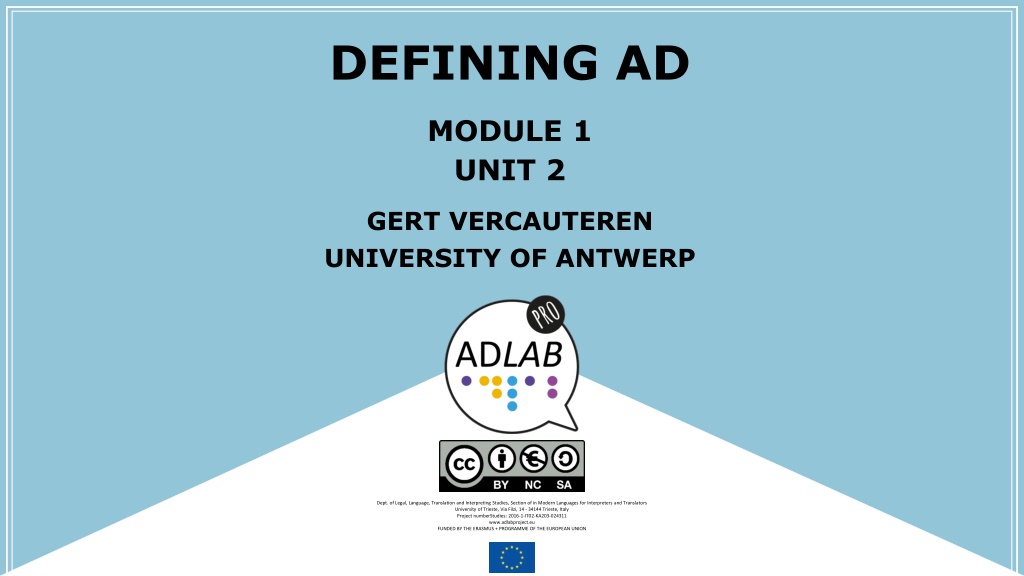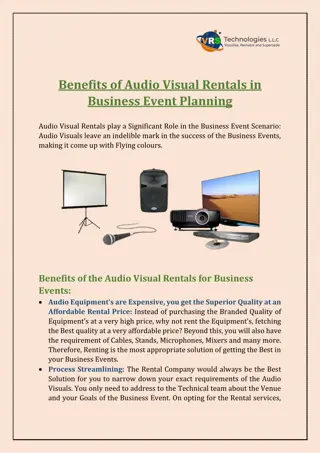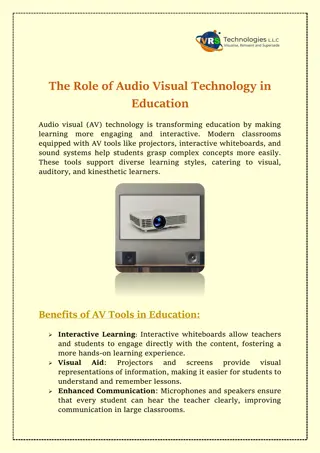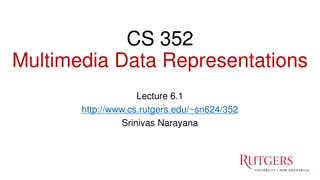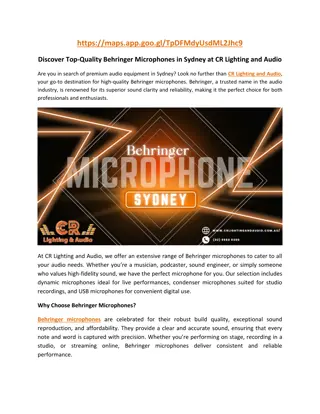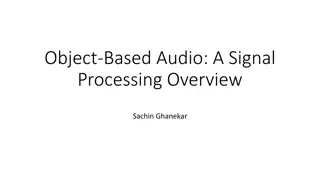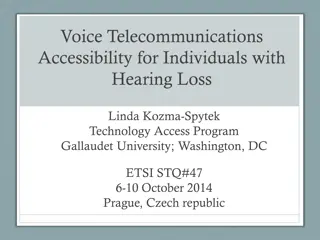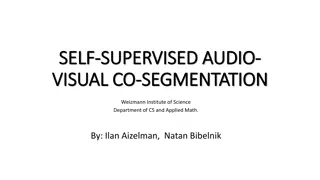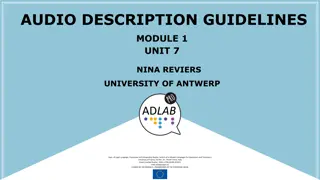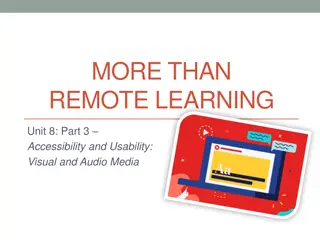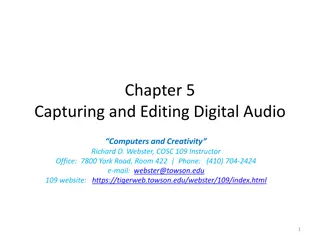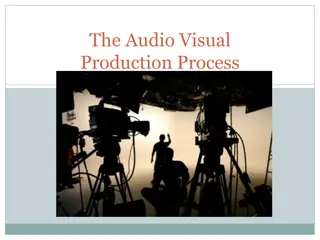Overview of Audio Description (AD) in Visual Media
Audio Description (AD) is a valuable assistive service for individuals with visual impairments, providing verbal narrations of visual elements in various audiovisual productions. Defined in different ways by experts in the field, AD aims to make audiovisual content accessible and enjoyable for the blind and visually impaired by supplementing key visual elements with descriptive narratives. This overview delves into the definitions, basic characteristics, and functions of AD, highlighting its importance in enhancing the audiovisual experience for all audiences.
Download Presentation

Please find below an Image/Link to download the presentation.
The content on the website is provided AS IS for your information and personal use only. It may not be sold, licensed, or shared on other websites without obtaining consent from the author.If you encounter any issues during the download, it is possible that the publisher has removed the file from their server.
You are allowed to download the files provided on this website for personal or commercial use, subject to the condition that they are used lawfully. All files are the property of their respective owners.
The content on the website is provided AS IS for your information and personal use only. It may not be sold, licensed, or shared on other websites without obtaining consent from the author.
E N D
Presentation Transcript
DEFINING AD MODULE 1 UNIT 2 GERT VERCAUTEREN UNIVERSITY OF ANTWERP Dept. of Legal, Language, Translation and Interpreting Studies, Section of in Modern Languages for Interpreters and Translators University of Trieste, Via Filzi, 14 - 34144 Trieste, Italy Project numberStudies: 2016-1-IT02-KA203-024311 www.adlabproject.eu FUNDED BY THE ERASMUS + PROGRAMME OF THE EUROPEAN UNION
- AD = defined in various ways - AD has various characteristics - Overview to create our own definition
DEFINITIONS OF AD (1) Piety (2004): the practice of using language to give persons who are visually impaired [...] access to movies, television programmes, and live events (p. 453).
DEFINITIONS OF AD (2) Matamala (2005): [a service] providing a narration of what is seen, i.e. giving an oral description of visual elements such as action costumes or props found in cultural events (p. 9)
DEFINITIONS OF AD (3) Greening and Rolph (2007): the addition of a descriptive narrative to accompany the key visual elements of theatre, television, cinema and other visual media (p. 127)
FIRST BASIC CHARACTERISTICS An assistive service for people with sight loss; An oral service, generally rendered on the basis of a written text A service that can be added to any kind of audio visual product, static or dynamic, live or recorded
DEFINITIONS OF AD (4) Reviers and Vercauteren (2013): a service that makes audiovisual products accessible and enjoyable for the blind and visually impaired by transferring images and unclear sounds into a verbal narration that interacts with the dialogues and sounds of the original text with which it forms a coherent whole.
FUNCTIONS OF AD - Provide an explanation of the images that is pleasant to the ear; - Provide a frame for the dialogues (i.e. who is talking?); - Identify unclear sounds Interact with all the modes of the audiovisual text
WORKING DEFINITION OF AD audio description is a service aimed at making any kind of (audio)visual product accessible to visually impaired people by translating visual and unclear aural information into a verbal narration that increases their understanding and enhances enjoyment of that product .
DEFINING AD MODULE 1 UNIT 2 GERT VERCAUTEREN UNIVERSITY OF ANTWERP Dept. of Legal, Language, Translation and Interpreting Studies, Section of in Modern Languages for Interpreters and Translators University of Trieste, Via Filzi, 14 - 34144 Trieste, Italy Project numberStudies: 2016-1-IT02-KA203-024311 www.adlabproject.eu FUNDED BY THE ERASMUS + PROGRAMME OF THE EUROPEAN UNION
The preparation of this presentation was supported by ADLAB PRO (Audio Description: A Laboratory for the Development of a New Professional Profile), financed by the European Union under the Erasmus+ Programme, Key Action 2 Strategic Partnerships, Project number:2016-1-IT02-KA203-024311.
The information and views set out in this presentation are those of the authors and do not necessarily reflect the official opinion of the European Union. Neither the European Union institutions and bodies nor any person acting on their behalf may be held responsible for the use which may be made of the information contained therein.
